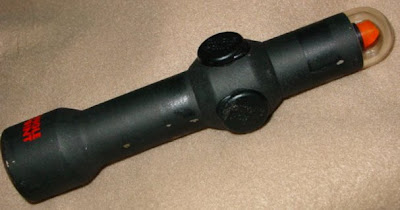The 40% Fabrication
As recently as this afternoon, CNN was repeating the canard that 40% of gun sales elude the present background check system. The number has been rather effectively challenged elsewhere in the media, but that makes no difference. Many media outlets still, as CNN does, uncritically repeat the 40% number just as if the claim had raised no questions.
The number is a very old one, and though the situation has changed and the number is obsolete, it has been bandied for so many years by gun control agitators that it is now something like received truth to the anti-gun contingent.
There is a good sound critique of the imaginary statistic in the National Review Online. Among other red flags there is this:
The dubious statistic of guns that avoided background checks — which is actually 36 percent — comes from a small 251-person survey on gun sales two decades ago, very early in the Clinton administration. Most of the survey covered sales before the Brady Act instituted mandatory federal background checks in early 1994.
If that alone didn't make the number invalid, the federal survey simply asked buyers if they thought they were buying from a licensed firearms dealer...
...John Lott, the author of several landmark studies on the real-world impact of gun control, has concluded that if you take out transfers of guns either between FFLs or between family members, the remaining number of transfers falls to about 10 percent. Those were the numbers from two decades ago. “We don’t know the precise number today, but it is hard to believe that it is above single digits,” he told me.
Even the traditionally anti-gun Washington Post chokes a bit on the claim:
In other words, rather than being 30 to 40 percent (the original estimate of the range) or “up to 40 percent” (Obama’s words), gun purchases without background checks amounted to 14 to 22 percent. And since the survey sample is so small, that means the results have a survey caveat: plus or minus six percentage points.
Moreover, as we noted before, the survey was taken in late 1994, eight months after the Brady law went into effect, and the questions were asked about gun purchases in the previous two years. So some of the answers concerned gun purchases that took place in a pre-Brady environment.
After trying very hard, administration-friendly Polti-Fact could rate the claim only half true. That piece quotes one of the originators of the 40% number:
We asked Philip Cook, a Duke University professor who co-authored the study, if he thinks that 40 percent estimate -- which is now more than 15 years old -- is still a current, reliable estimate of secondary market gun sales.
"The answer is I have no idea," Cook said. "This survey was done almost 20 years ago. … It’s clear there are a lot of transactions that are not through dealers. How many, we’re not really clear on it. … We would say it’s a very old number.""
It is frustrating that despite all the readily available material that casts doubt on the 40% number, that number is still being bandied freely by the "legitimate media" that the the administration is counting on to put its gun control ideas over the top.
When you support your case on false or misleading claims, it means you don't have much of a case.


Comments
Post a Comment